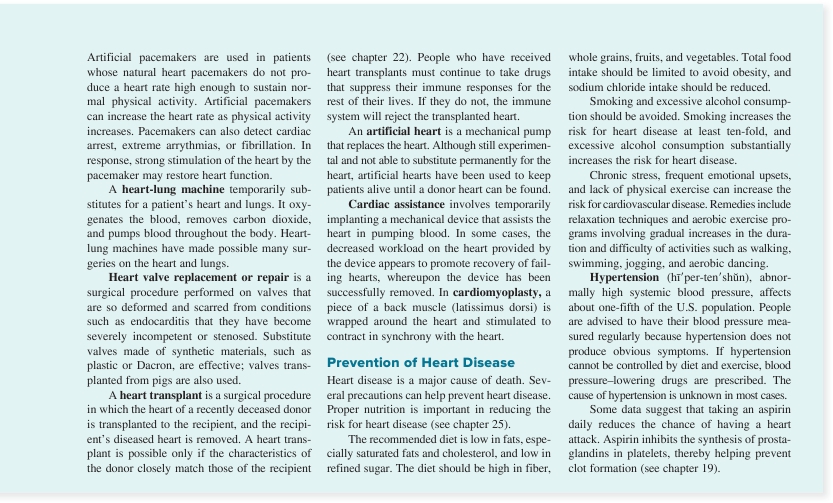CHAPTER 20 Cardiovascular System: The Heart

709
A rise in the extracellular concentration of Ca
2 +
producesa greater force of cardiac contraction because of a higher influxof Ca
2 +
into the sarcoplasm during action potential generation.Elevated plasma Ca
2 +
levels have an indirect effect on heart ratebecause they reduce the frequency of action potentials in nervefibers, thus reducing sympathetic and parasympathetic stimula-tion of the heart (see chapter 11). Generally, elevated blood Ca
2 +
levels lower the heart rate.A low blood Ca
2 +
level increases the heart rate, althoughthe effect is imperceptible until blood Ca
2 +
levels are reducedto approximately one-tenth of their normal value. The reducedextracellular Ca
2 +
levels cause Na
+
channels to open, whichallows Na
+
to diffuse more readily into the cell, resultingin depolarization and action potential generation. However,reduced Ca
2 +
levels usually cause death due to tetany of skeletalmuscles before they decrease enough to markedly influence theheart’s function.
temperature cause the heart rate to speed up, and decreases in tem-perature cause the heart rate to slow. For example, during exerciseor fever, increased heart rate and force of contraction accompanytemperature elevations, but the heart rate drops under conditionsof hypothermia. During heart surgery, body temperature is some-times reduced dramatically on purpose to slow the heart rate andother metabolic functions.

ASSESS
YOUR PROGRESS
44.
Explain how the nervous system detects and responds toeach of the following:a. a decrease in blood pressureb. an increase in blood carbon dioxide levelc. a decrease in blood pHd. a decrease in blood oxygen level
45.
Describe the baroreceptor reflex and the heart’s responseto an increase in venous return.
46.
What effect does an increase or a decrease inextracellular potassium, calcium, and sodium ions have onthe heart’s rate and force of contraction?
47.
What effect does temperature have on heart rate?
Effect of Body Temperature
Under resting conditions, the temperature of cardiac muscle nor-mally does not change dramatically, although alterations in tem-perature influence the heart rate. Small increases in cardiac muscle